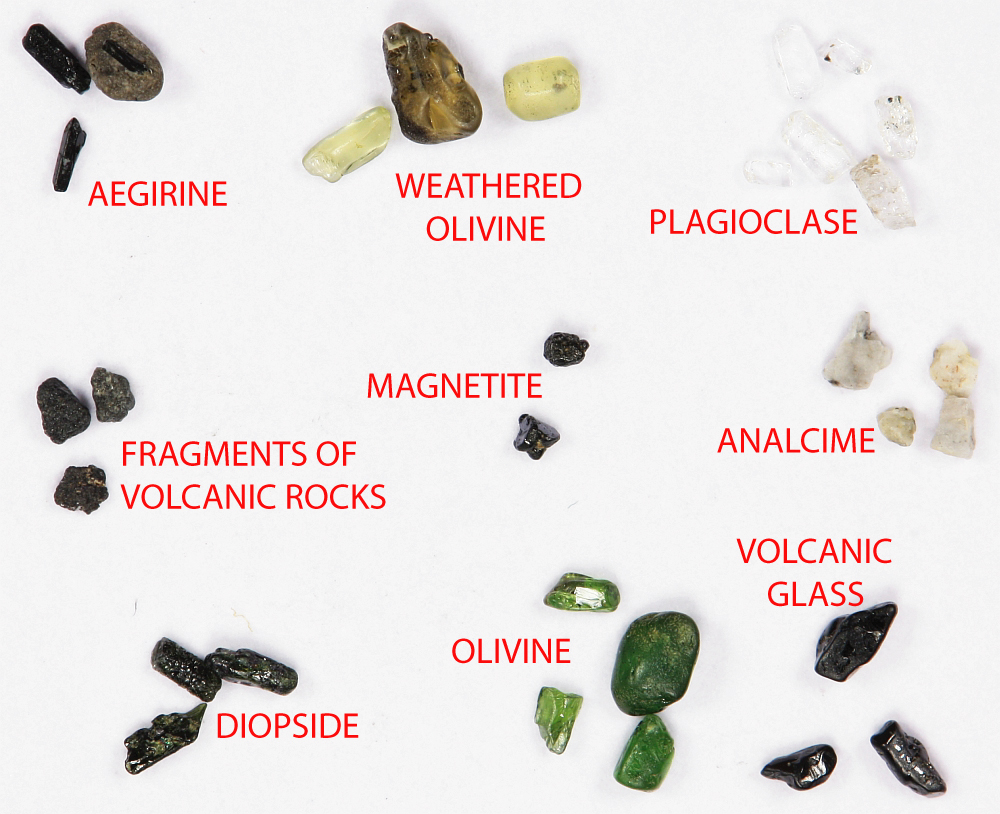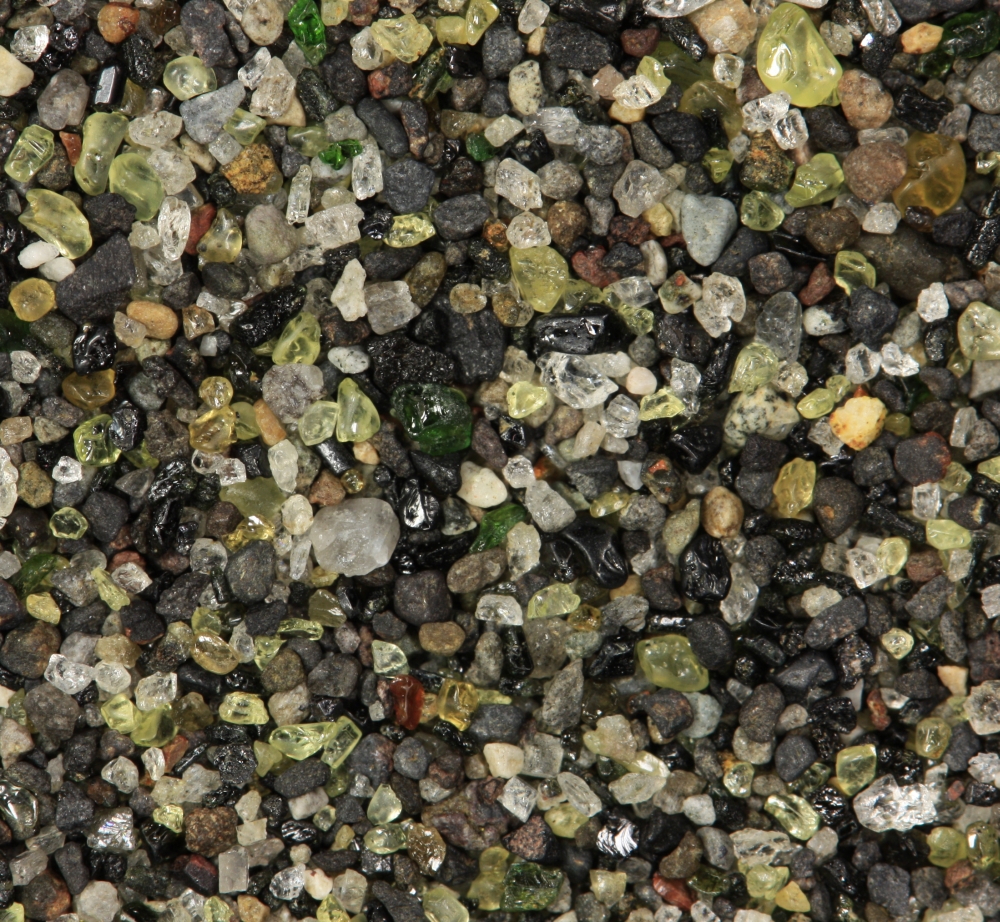Photos of sand may be beautiful but their educational value is probably pretty limited. We tend to overlook details if thousands of grains are visible at the same time. So I decided to try another approach with a volcanic sand sample from São Miguel Island in the Azores Archipelago.
This sand contains olivine, plagioclase, and two pyroxenes (diopside and aegirine). This clearly indicates that the sand is the disintegration product of mafic volcanic rocks. There are also lots of volcanic glass and analcime grains. I don’t know whether the latter is a primary mineral or an alteration product of volcanic glass. Analcime is the only zeolite that may directly crystallize from magma.
The presence of both analcime and aegirine give a strong hint that the volcanism in the Azores archipelago is probably alkaline. This term may easily create confusion. Here it means that the magma is enriched in alkaline chemical elements (sodium, Potassium). It has not much to do with brines or bases dissolved in water. Analcime and aegirine both contain sodium.
Most of the components this sand is made of are unstable in the weathering environment. Hence, it has to be pretty immature sand. Some olivine grains are clearly weathered. They are dull yellowish green while fresh olivines are bright green.
Pay attention to the fact that there is absolutely no quartz. Oceanic islands with mafic volcanism are one of the few places where you can see sand without this mineral. Quartz and olivine are often mutually exclusive. Sure, everything may be mixed up in sand but these minerals in normal circumstances do not crystallize from the same body of magma. Magnesium rich olivine forsterite (olivine in this sample is also forsterite) will react with free silica and form pyroxene: Mg2SiO4 (forsterite) + SiO2 (quartz) → 2MgSiO3 (enstatite, one of pyroxenes). This equation means that we may have olivine and pyroxene or pyroxene and quartz but no olivine and quartz together.


